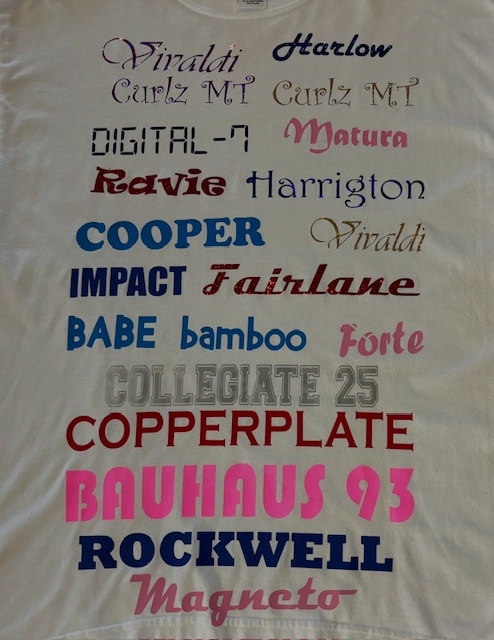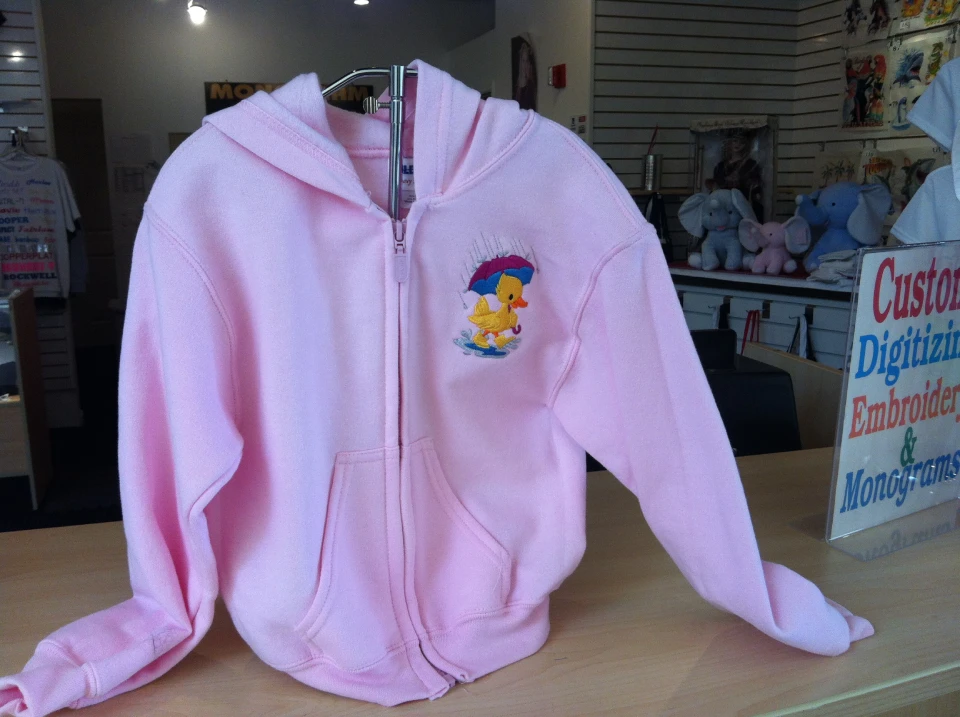Individualized Lab Coats with Embroidery for Medical Professionals
Individualized Lab Coats with Embroidery for Medical Professionals
Blog Article
The Art of Customized Needlework: Opening the Keys to Creating Special and Remarkable Designs
The secrets to producing personalized embroidery designs that astound the eye and leave a lasting perception lie in a fragile balance of method, creativity, and attention to information. As we dive right into the globe of personalized needlework, we uncover the nuanced interaction between string selection, stitch intricacy, and layout customization that elevates a mere garment to a job of art.
Choosing the Right Needlework Threads
When choosing embroidery threads, what key aspects should you consider to make certain the ideal outcomes for your customized designs? The choice of embroidery string is critical in establishing the final outcome of your embroidered style.
Moreover, the weight or thickness of the string plays a significant role in the look of the embroidery. Thicker threads can include measurement and structure to your layout, while finer strings are optimal for complex details and little message. In addition, thinking about the shade fastness and washability of the thread is critical to ensure that your custom-made designs maintain their quality and vibrancy with time. By meticulously reviewing these factors and selecting premium strings that meet your certain requirements, you can enhance the aesthetic appeal and longevity of your stitched productions.
Exploring Different Stitch Strategies
To dive into the world of 'Exploring Different Stitch Methods', one should comprehend the ins and outs and nuances that each stitching method gives the art of embroidery. Various stitch strategies not only include aesthetic rate of interest yet additionally add to the overall appearance and measurement of the design. One popular stitch technique is the satin stitch, which involves closely packed parallel stitches to develop a smooth and glossy surface area, perfect for filling up in forms and creating bold lays out.
On the other hand, the backstitch is a functional method frequently utilized for outlining and adding fine information. It entails stitching backward to develop a solid line of needlework. In addition, the French knot stitch includes a responsive element to designs, excellent for producing textured accents like blossom centers or attractive touches.
Discovering different stitch methods enables embroiderers to play with light, darkness, and deepness within their layouts, elevating the visual allure and imaginative quality of their needlework projects. By understanding various sewing approaches, one can open countless possibilities for creating special and memorable custom-made embroidery items.
Incorporating Personalized Design Aspects
Having actually explored the complexities of various stitch methods such as the satin stitch, backstitch, and French knot, the emphasis currently moves in the direction of incorporating individualized style components in custom-made embroidery projects. Personalized style components play a vital function in making needlework tasks really one-of-a-kind and memorable.
One more means to include personalized style components is by consisting of signs or motifs that hold special significance to important link the recipient or show their look at here interests and individuality. For instance, including a favorite flower, pet, or hobby-related icon can make the needlework style much more significant and tailored. Furthermore, choosing colors that resonate with the recipient or line up with the intended motif can further boost the customization of the needlework project.
Grasping the Art of Shade Sychronisation

One key element of shade control is understanding shade theory. This consists of knowing just how different colors engage with each various other, the feelings they communicate, and exactly how they can be incorporated to create aesthetically appealing layouts. By applying color theory concepts, embroiderers can produce harmonious color schemes that boost the general look of the layout.
Additionally, paying focus to contrast is essential in shade sychronisation. Utilizing contrasting shades can help certain components of the design pop, enhance readability, and produce a visually dynamic needlework piece. By grasping the art of color control, embroiderers can boost their styles and develop unforgettable items that resonate with clients and customers alike.
Enhancing Structure With Advanced Embroidery Stitches

French knots, as an example, are excellent for including small, increased dots to your layout, imitating the look of beads or developing a distinctive surface area. Bullion knots, on the various other hand, can be utilized to produce twisted, ropelike elements that include a luxurious feel to the needlework. Seed sewing involves tiny, scattered stitches that can fill in areas with a polychromatic texture, while turkey job creates fluffy, dimensional accents evocative animal hair or vegetation. Explore these best site sophisticated embroidery stitches permits you to press the boundaries of standard needlework and produce really special and aesthetically enticing structures in your styles.
Conclusion
Finally, the art of personalized embroidery entails a mix of picking the appropriate strings, exploring various stitch strategies, incorporating tailored design components, understanding shade coordination, and boosting appearance with sophisticated stitches. By recognizing and executing these crucial elements, embroiderers can develop one-of-a-kind and remarkable styles that showcase their creative thinking and skill. Needlework fanatics can unlock the tricks to creating lovely and bespoke items that stand out and leave an enduring perception.
Report this page